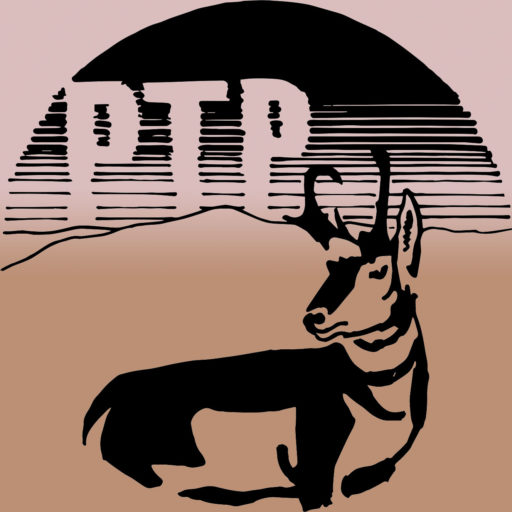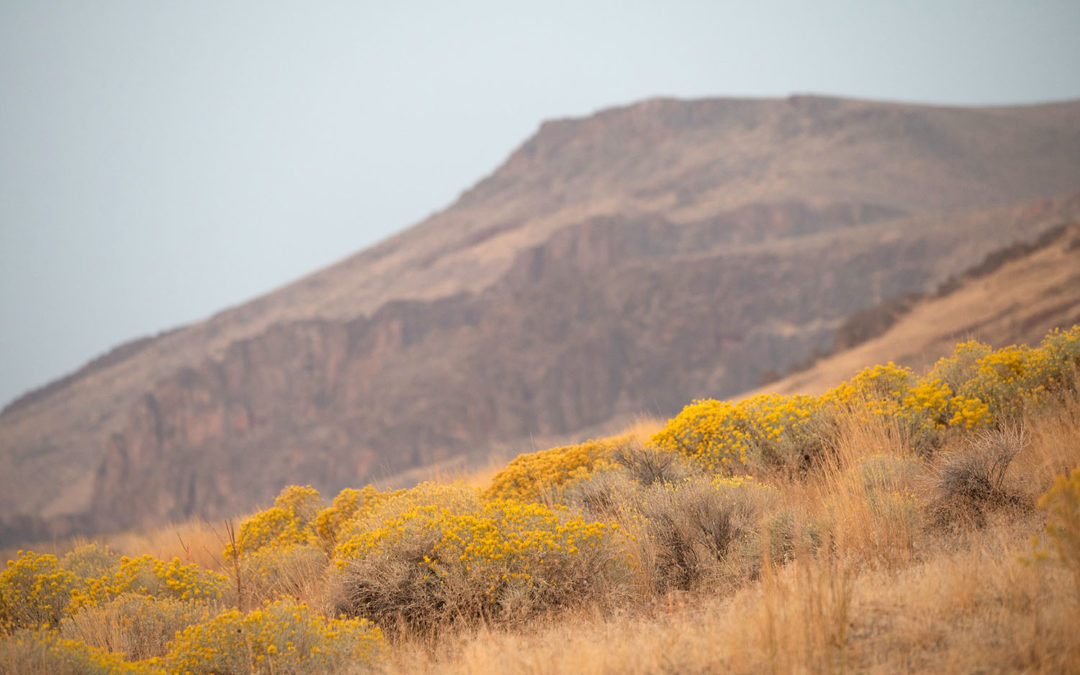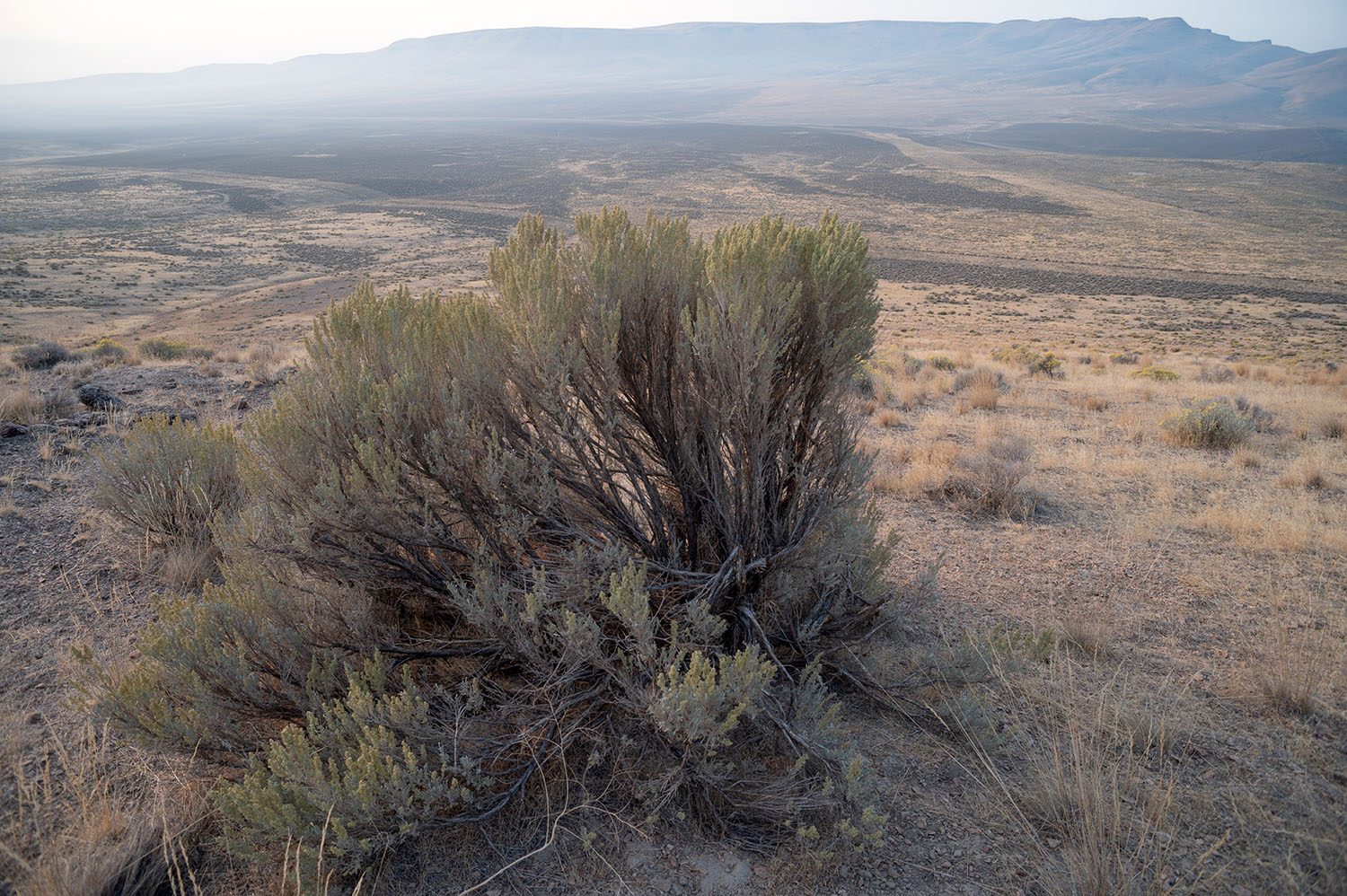Flowering sage covers the desert. A whole universe exists in these shrubs. Sparrows, meadowlarks, and spotted towhees nest. At dawn, their soft chitter grows loud. Like so many creatures who live in the Great Basin, they need large areas of intact habitat to survive.
The blue-gray foliage of the sagebrush, artemisia tridentate, is food for black-tailed jackrabbits, sagebrush voles, pygmy rabbits, pronghorn, elk, mule deer, desert bighorn sheep, and the rare greater sage-grouse. Others—the chisel-toothed kangaroo rat, chipmunks, sage thrashers, sagebrush lizards, snakes, and more than a thousand species of insects and invertebrates—make their home among these branches, some hiding from coyote and golden eagles.
This land is as ancient and vital as an old-growth forest. Hundreds of birds, mammals, reptiles and amphibians live here, including sixty-seven species of mammals. Some are endangered, like the sage grouse. The sagebrush desert is a nurse plant to them all. Robust and delicate, it plays a critical role in the hydrologic cycle.
Rolling hills and rocky cliffs shape the horizon. The vast, undulating sea of sagebrush, more like an ocean fjord than a valley, are surrounded by mountains that stand like quiet gods whispering to the waves. Thacker Pass mountainside has existed in peace for sixteen million years, free of highways and lights. The silence is nourishing and hypnotic.
A dry creek bed is lined with juniper and pinyon pine trees. I imagine the artery of long-awaited water that flows here and into Thacker Pond, an oasis in the desert a few miles down the mountain. Birds drink and bathe. Locals fish. About twenty-five ducks swim, splash, and quack. A pronghorn mother and her fawn drink. These clear waters feed the Quinn and King River Valleys, the spawning grounds of Lahontan cutthroat trout.
At dusk, sparrows and horned larks sing the sun down. The sky turns shades of crimson, orange, and purple. A few bats circle overhead. In the distance, the staccato yips, yaps, and barks of howling coyotes rise and fall.
In the night sky, the constellations are bright. Stars flicker and galaxies twinkle. The Milky Way—that band of light across the night sky—shines in the moonless night. Nighthawks sing chorus to the piercing call of a lone mockingbird.
Sagebrush ecosystems, one of the most imperilled in our country, are disappearing at an alarmingly rapid speed. As I drift off to sleep, huddled in my sleeping bag, I imagine the mockingbird’s song is a prayer, that this place will not be destroyed, that it can live on—wild, free, and unharmed.
To learn more about the beauty, plants, and wildlife of the Great Basin, check out The Sagebrush Ocean by Stephen Trimble.






Today I begin my educational journey for Thacker Pass. I feel stirred and emotional. I feel this journey will lead me to camp sooner than later. Thank you.
thank you